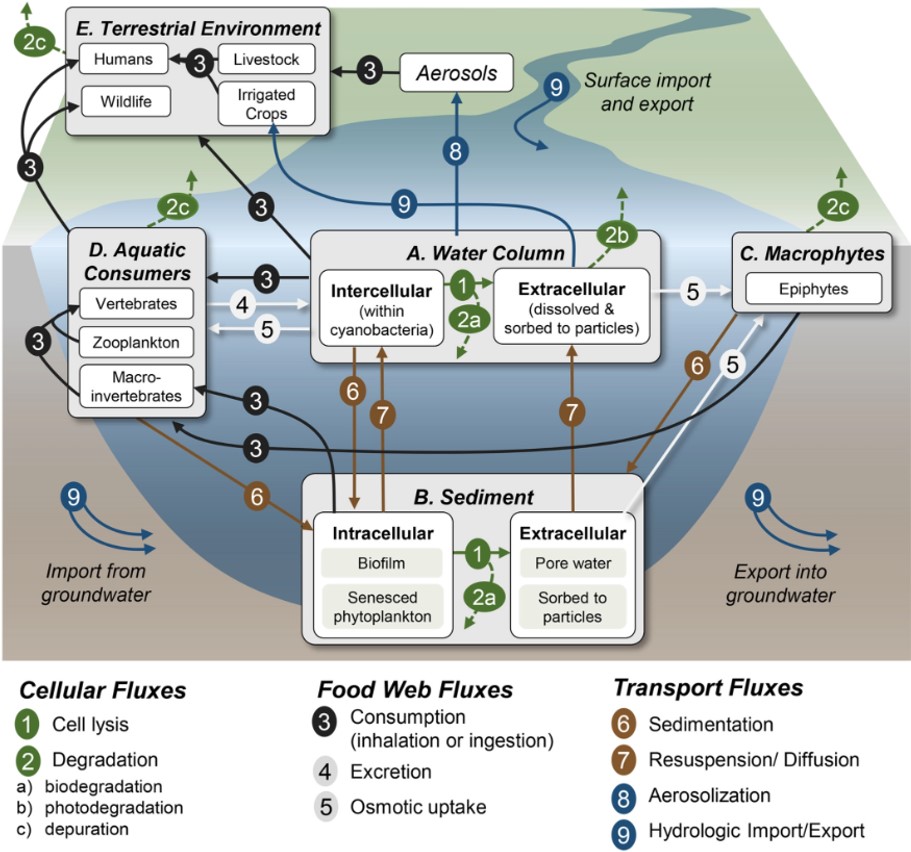
Authors
Quin K. Shingai, Grace M. Wilkinson
Microcystin poses a serious threat to aquatic ecosystems and human health. There is a pressing need to understand the production, movement, and storage of microcystin in lakes. We constructed a conceptual biogeochemical model for microcystin through a comprehensive literature synthesis, identifying four major pools and nine major fluxes in lakes that also connect to the terrestrial environment. This conceptual model can be used as the framework for developing ecosystem mass balances of microcystin. We propose that the concentration of microcystin in the water column is the balance between the import, sediment translocation, production and degradation, uptake, burial, and export. However, substantial unknowns remain pertaining to the magnitude and movement of microcystin. Future investigations should focus on sediment fluxes, drivers of biodegradation, and seasonal dynamics. Adopting the framework of a “microcystin cycle” improves our understanding of processes driving toxin prevalence and helps to prioritize strategies for minimizing exposure risks.
